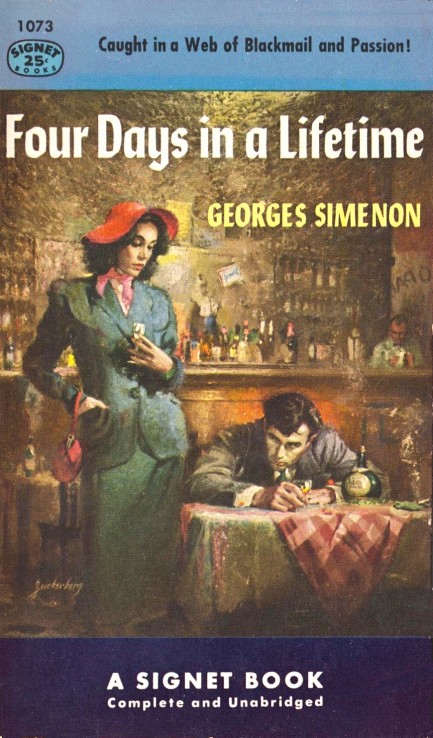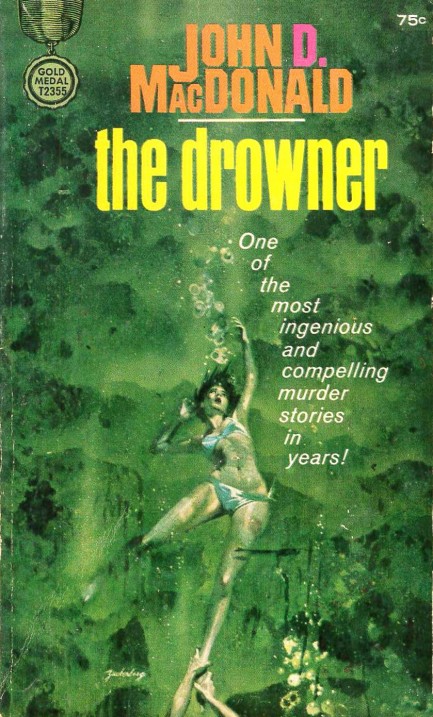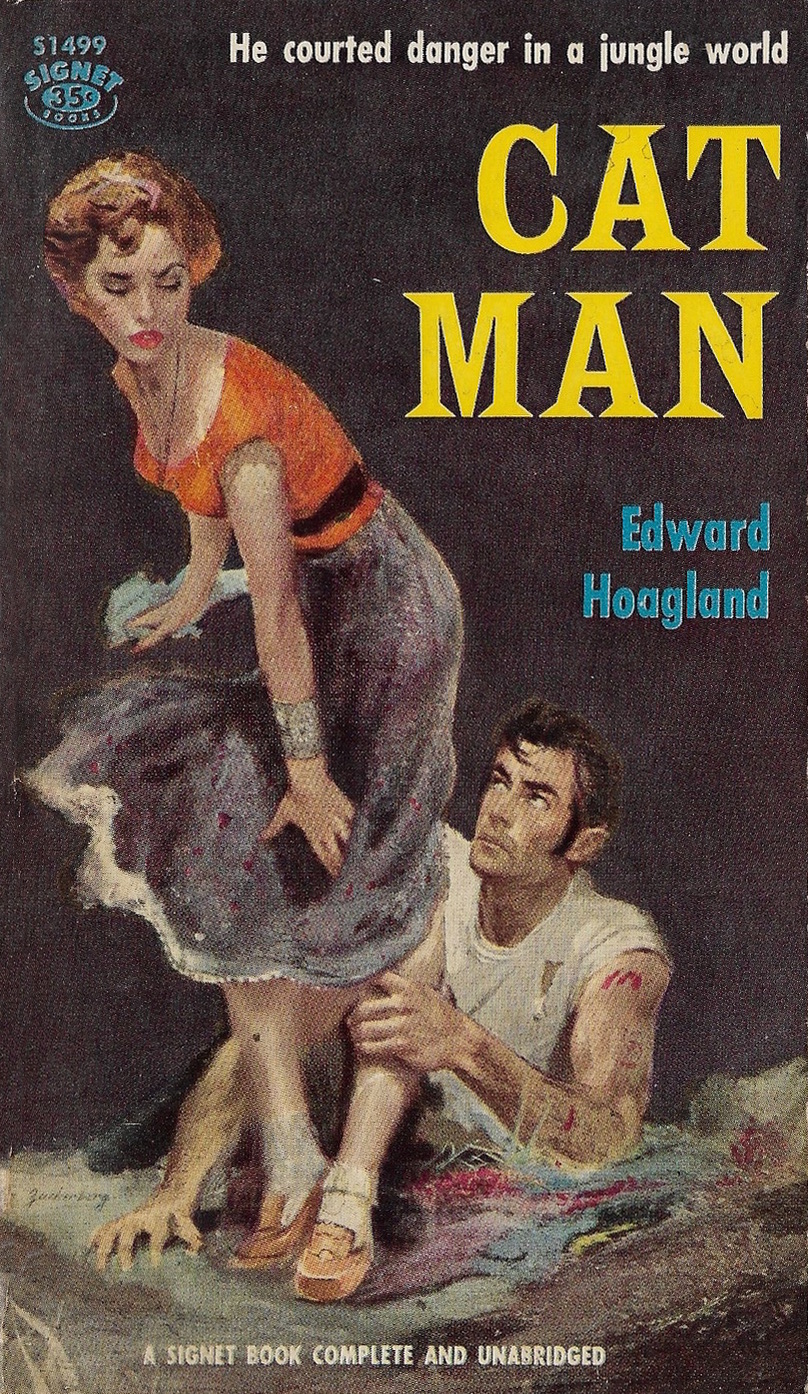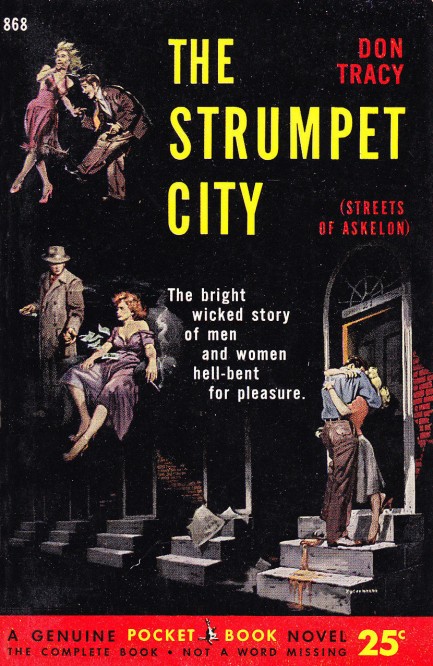| Vintage Pulp | May 14 2022 |

Gosh, another broken down wreck of a man. Well, tonight I'm not being picky, so get your game face on, champ.

Georges Simenon was an incredibly prolific author who wrote two hundred books, starting at age seventeen, striking gold in 1931 when he invented the character of Inspector Jules Maigret. While he rode the honorable inspector like a sturdy horse for scores of outings, he also made the occasional splash with stand-alone books such as Four Days in a Lifetime, which you see above. It was originally published as Les Quatre Jours du pauvre homme in 1949, and is a tale narrated in two sections about lowly François Lecoin, who starts with little but achieves success via underhanded and amoral means. It's a rise and fall story, and a particularly turbulent one. The Signet edition came in 1953 with cover art by Stanley Zuckerberg.
| Vintage Pulp | Dec 3 2020 |

A favor turns fatal in MacDonald mystery.

This is just the sort of eye-catching cover any publisher would want from an illustrator, an image that makes the browser immediately curious about the book. Since so many John D. MacDonald novels were illustrated by Robert McGinnis, and the female figure here has the sort of elongation you usually see from him, you could be forgiven for assuming at a glance that this is another McGinnis, but it's actually a Stanley Zuckerberg effort, clearly signed at lower left. We've run across only a few of his pieces, namely The Strumpet City and Cat Man. This is by far the best we've seen.
The story here is interesting. It begins with a woman having drowned in a lake and a sister who disbelieves the verdict of accidental death. She's right, of course, and the detective she hires soon agrees with her. The mystery is quickly revealed to involve taxes, deception, and money—specifically money the dead woman was supposed to keep safe and which has now disappeared. In an unusual move, MacDonald unveils the killer two thirds of the way through the tale, and the detective figures it out shortly thereafter. The final section of the book details his efforts to trap the villain.
This is the last book MacDonald wrote before embarking on his famed Travis McGee franchise. It was within the McGee persona that MacDonald indulged himself in often tedious sociological musings. In The Drowner his characters ring more true, but you can see signs of what is to come in several existential soliloquies concerning the state of the world and the various frail personality types that inhabit it circa 1963. For all our misgivings about the McGee books, they're still good. But we especially recommend any novel MacDonald wrote that came earlier, including this one.
Update: We got an e-mail from Pamela, who told us, "The plot seemed familiar, and sure enough - it was an episode of Kraft Suspense Theatre back in 1964."
We had a look around for it, with no expectations of success, but lo and behold, we found the episode on Archive.org, which often has public domain films and television shows on its platform. We watched the episode, which stars Aldo Ray, Clu Gallagher, and Tina Louise, and we have to say, John. D. MacDonald was probably thrilled. The adaptation is almost exact, with only a bit of license taken with the climax. The only thing he would have hated is that he's credited as John P. MacDonald. The only thing we hated was the lo-rez quality. Oh well. You can't ask for perfection when it comes to early television.
| Vintage Pulp | May 9 2019 |

Disturbed characters populate pointlessly offensive book about a traveling circus.

It's been a long time since we saw any cover art from Stanley Zuckerberg—almost ten years, or about fifty-seven in cat years. Zuckerberg's work fronts Edward Hoagland's Cat Man, a gritty 1958 novel that delves into the world of the traveling circus and life of the lead character who works with the big cats. Hoagland had the same job in real life for a while and he wants you to know it, which is why his book is dense with circus jargon. It's also dense with racism. If there were a point being made à la William Styron or Ben Winters, then okay, but there isn't. The novel earned some acclaim, which doesn't surprise us—pointlessly racist books often did back then. But this example is especially indefensible.
We know what some would suggest—that the attitudes on display are historical realism. But that hoary old excuse doesn't hold water, considering Hoagland takes the time to create detailed characters of Native American and Latino descent. Those portrayals are—of course—caricatures by today's standards, but Hoagland does try to make them resonate. The African-American characters, conversely, are just rabble in the background, referred to only collectively, and using the most offensive possible terminology. Worse, even some of the circus animals have names and personalities, while the black characters have neither. We're not joking. This was Hoagland's first novel and he later went on to become a respected nature essayist. Hopefully he learned something about the nature of people.
We know what some would suggest—that the attitudes on display are historical realism. But that hoary old excuse doesn't hold water, considering Hoagland takes the time to create detailed characters of Native American and Latino descent. Those portrayals are—of course—caricatures by today's standards, but Hoagland does try to make them resonate. The African-American characters, conversely, are just rabble in the background, referred to only collectively, and using the most offensive possible terminology. Worse, even some of the circus animals have names and personalities, while the black characters have neither. We're not joking. This was Hoagland's first novel and he later went on to become a respected nature essayist. Hopefully he learned something about the nature of people.
| Vintage Pulp | Jun 23 2009 |

Young man come play your horn.

The best thing about Trumpet City, in our humble opinion, is the food. That’s probably surprising to hear, because the place is super famous for its music, and the music is great of course, mainly because of the amazing tradition of horn players—duh. But the cuisine of Trumpet City is really a quite underrated element of… Sorry, what? Say again? Strumpet?




































































